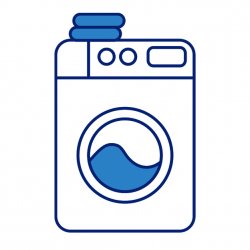Appliance Types
- Air Conditioner
- Automobile
- Chainsaw
- Circular Saw
- Dishwasher
- Drills
- Dryer
- Drywall Screw Gun
- Furnace
- Gas Fireplace
- Gas Grill
- Gas Patio Heater
- Grinder
- Heat Pump
- Impact Driver
- Impact Wrench
- Microwave
- Nailer
- Orbital Sander
- Pool Heaters
- Powerwall
- Range
- Refrigerator
- Television
- Washer
- Water Heater
Appliance Brands
- A.O. Smith
- AccuCold
- Admiral Craft
- AGA
- Airrex
- Amana
- Ambiance
- American Range
- American Standard
- American Water Heaters
- Aquacal
- Armstrong
- Asko
- Avanti
- Avenlur
- Azure
- Beko
- Bellfires
- Bertazzoni
- Blackstone
- Blaze
- Blomberg
- BlueStar
- Bosch
- Bradford White
- Bromic
- Bryant
- Cafe
- Calcana
- Capital
- Carrier
- Char-Broil
- Char-Griller
- Chrysler
- Coates
- Coleman
- Comfortmaker
- Commercial Chef
- Continental
- Cosmo
- Cove
- Crown Verity
- Dacor
- Daikin
- Danby
- Danfoss
- DaVinci
- DCS
- Deco
- DeWALT
- Ducane
- Dyna-Glo
- Dyson
- EcoSmart
- Electrolux
- Element4
- Empava
- Equator
- Eurodib
- European Home
- Everdure
- Farberware
- Fhiaba
- FibroPool
- Fire Sense
- Fisher
- FiveStar
- Flare
- Flash Furniture
- Focus
- Ford
- Forno
- Forte
- Frigidaire
- Fulgor Milano
- Gaggenau
- GE
- General Motors
- GlowBrand
- Goodman
- Grundig
- GSW
- Haier
- Hayward
- Heatstar
- Heil
- Hestan
- Hisense
- Hitachi
- Hotpoint
- iio
- Ilve
- Impecca
- Ingignia
- Insignia
- JennAir
- John Wood
- Keeprite
- Kenmore
- Kenyon
- KitchenAid
- Kucht
- La Cornue
- Lennox
- LG
- Liebherr
- Lifetime
- Lion
- Luxaire
- Lynx
- Magic Chef
- Marvel
- Maytag
- McQuay
- MicroFridge
- Midea
- Miele
- Migali
- Monogram
- Montigo
- Mr Heater
- Napoleon
- Navien
- Nexgrill
- Noritz
- Panasonic
- Patio Comforts
- Payne
- Pentair
- Perlick
- PITT
- Premier
- Raypak
- Real Fyre
- Regency
- Reliance
- Rheem
- Rinnai
- Roma
- Ruud
- Saber
- Samsung
- Schwank
- Sharp
- Smeg
- Solas
- Sony
- Spartherm
- Speed Queen
- StaRite
- State Water Heaters
- Stiebel Eltron
- SubZero
- Summerset
- Summit
- SunGlo
- SunPak
- Sunpentown
- SunStar
- Superiore
- Takagi
- TCL
- TEC
- Tempstar
- Tesla
- Thermador
- Thor Kitchen
- Toshiba
- Town and Country
- Toyota
- Traeger
- Trane
- Twin Eagles
- U-Line
- Unique
- Vaillant Group
- Valor
- Verona
- Victory
- Viessmann
- Viking
- Vizio
- Weber
- Westinghouse
- Whirlpool
- Whynter
- York
- ZLINE
Article Categories
- Air Conditioners
- Appliance Care
- Appliance News
- Dishwasher News
- Drying Machines
- Furnaces
- Gas Fireplaces
- Microwaves
- Pool Heaters
- Refrigerators
- Stoves - Ranges
- Tips and Tricks
- Washing Machines
- Water Heaters
More Articles

Washer Troubleshooting
A washing machine (laundry machine, clothes washer, or washer) is a home appliance used to wash laundry. The term is mostly applied to machines that use water as opposed to dry cleaning (which uses alternative cleaning fluids and is performed by specialist businesses) or ultrasonic cleaners. The user adds laundry detergent, which is sold in liquid or powder form, to the wash water.
Why Won't My Washer Spin?
The lid switch assembly prevents the washer from spinning when the lid is open. If the lid switch assembly fails, the washer will not spin. To determine if the lid switch assembly is defective, use a multimeter to test the lid switch for continuity. If the lid switch does not have continuity, replace it.
Why is My Washing Machine Making A Loud Noise?
The tub bearing is mounted in the middle of the outer tub. The tub bearing helps to keep the inner tub spinning smoothly. Replacing the tub bearing is a very involved repair and will require disassembling most of the washer. If the tub bearing is defective, we recommend replacing both the outer tub and bearing.
Washer won't agitate
If the washer won't agitate, replacing the agitator repair kit may solve the problem. The kit contains the agitator components that are most likely to wear out and/or fail. If any of the parts are worn out, stripped, or damaged, replace the kit.
Washer won't drain
Sometimes, small objects or articles of clothing can get caught in the drain pump. To determine if anything is blocking the drain pump, remove the drain pump and check the pump for obstructions. If the drain pump is clear of obstructions, but is still noisy during the drain cycle, replace the drain pump.
Washer vibrating or shaking
One or more of the shock absorbers might be broken or worn out. The shock absorbers dampen the vibration of the washer tub. If one or more of the shock absorbers are worn out, the washer will vibrate or shake. Sometimes, when a washer is moved to another location, the shock absorbers can separate. Check the shock absorbers to ensure that they are positioned correctly, and inspect them for damage and wear. If one or more of the shock absorbers are broken or worn out, we recommend replacing all of the shock absorbers as a preventative measure.
Washer fills slowly or will not fill at all
The water inlet valve opens to allow water to enter the washing machine. If the water inlet valve is defective, the wash may fill slowly or not fill at all. The water inlet valve requires sufficient water pressure to function properly. First, check the water pressure to determine that it is adequate. If the water pressure is adequate, try cleaning the screens inside the water inlet valve hose connection ports. If the washer still fills slowly, replace the water inlet valve.
Washer leaking water
The drain pump pumps water out the drain hose. If the drain pump is cracked or damaged, or if the bearings are worn out, the drain pump may leak water. The drain pump is not repairable—if the pump is leaking water, replace it.
Washer won't start
The timer is frequently misdiagnosed—before replacing the timer, first check all of the more commonly defective parts. To determine if the timer is defective, consult your washer’s wiring diagram and use a multimeter to test the timer for continuity.
My Washer Won't Spin or Agitate
Inspect the drive belt to determine if it is broken or if it is loose on the pulleys. If the drive belt is broken or loose, replace it.




